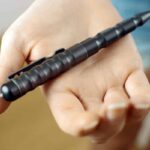If you own an AR-15, you are well acquainted with the 5.56 NATO. Along with its civilian sibling, the .223 Remington, this round makes up a massive portion of the ammo market for the AR platform.
Because of the AR’s popularity, manufacturers have created numerous rounds for this rifle. AR cartridges include, among many others, the 6.5 Grendel. The 6.5 may not carry the same level of fame, but it has an active, loyal fanbase.
Why?
Because it delivers excellent downrange capability and extended hunting potential from the popular AR platform.
Should you make the switch from 5.56 to 6.5? Should the Grendel be your next hunting round? Let’s take a close look to find out…
5.56mm NATO or 6.5 Grendel: Quick Comparison
Now that we understand the performance capabilities, we can identify the advantages of each cartridge…
Advantages of the 6.5 Grendel:
- Stronger energies, especially downrange.
- A slightly wider bullet creates larger wound channels.
Advantages of the 5.56 NATO
- Faster speed, especially within 200 yards.
- A large market of affordable ammunition makes it better for high-volume target shooting.
6.5 Grendel vs 5.56: Side by Side
|
AR-15 semiautomatic rifles |
AR-15 semiautomatic rifles |
How are They the Same?

The obvious similarity (and the reason we are comparing these rounds) is that they are both loaded into the AR-15 rifle. This firearm, which has been called “America’s rifle,” has many advantages, including nearly unlimited customizability and practical versatility. 5.56 ammo (and we’ll include .223) is the standard load for the AR-15, while the 6.5 Grendel attempts to give AR shooters enhanced ballistic capabilities.
Physically they are different, but there is one notable similarity: the length. Both fit into the AR chamber at 2.26 inches in length, although other measurements, such as bullet diameter and case width, make them easily distinguishable.
Physical Specs
The physical differences are obvious. The 6.5 Grendel’s bullet is wider, although it’s not a major difference. The most notable difference is the bullet weights. With a wider projectile, the 6.5 Grendel packs bullets weighing as much as 130 grains, and they can be even higher with specialty-load ammunition. The 5.56 NATO mostly tops out around 77 grains, while the majority of rounds are a standard 55-grain.
There is also a difference in case length (the 5.56’s is longer) and case width (the Grendel’s is wider). This creates a difference in total capacity, with the Grendel having a bit more room for propellant.
What’s Cheaper to Shoot?
You might assume that the 5.56 NATO would have a massive advantage in ammo availability. This is sort of, but not completely true. 6.5 Grendel ammo, essentially, is just as readily available as the 5.56 NATO, if you are strict about not including .223 in the calculation. Since a 5.56 chamber can also load the .223 Remington. (.223 Remington rifles, it should be noted, should not load the higher-pressured 5.56.) This gives 5.56 users access to the vast assortment of .223 ammunition, which is one of the most widely sold cartridges on the planet.
With the availability of bulk and military surplus ammo, the 5.56 is often a cheaper option, although many 6.5 Grendel rounds have comparable prices.
6.5 Grendel vs 5.56 Ballistics

To compare these two rounds, we took a simple approach. We selected five products from each cartridge, tallied the manufacturer stats, and calculated the average. This approach, while imperfect, provides a decent method for comparing the two rounds.
Velocity Comparison
|
90-grain Varmageddon (Nosler) |
||||||
|
100-grain |
||||||
|
115-grain TAC-TX BT (Barnes) |
||||||
|
120-grain Fusion MSR (Federal) |
||||||
|
130-grain |
||||||
|
55-grain |
||||||
|
62-grain |
||||||
|
68-grain |
||||||
|
75-grain |
||||||
The 6.5 Grendel was created to increase the performance capabilities of the AR-15. As we’ll see, it achieved this goal in many respects. But in velocity, at least close range, it appears to fall short. From the muzzle averages, it’s about 250 feet per second slower than the 5.56 NATO. There is plenty of overlap, but the light 55-grain 5.56 rounds deliver speeds over 3,100 fps, which makes it blazing fast compared to most AR rounds.
Downrange, however, the 6.5 Grendel is catching up. At 500 yards, the difference in averages narrows to a mere 10 fps, which is, for all practical purposes, insignificant. Downrange the stats are similar, but the 5.56 wins this comparison thanks to better muzzle and short-range speeds.
Energy
|
90-grain Varmageddon |
||||||
|
100-grain |
||||||
|
115-grain |
||||||
|
120-grain Fusion MSR (Federal) |
||||||
|
130-grain |
||||||
|
55-grain |
||||||
|
62-grain |
||||||
|
68-grain |
||||||
|
75-grain |
||||||
We now see the purpose of the 6.5 playing out in the stats. It’s more powerful from start to finish, and demonstrates a superior level of energy that makes it more capable for long-range hunting.
With a wider bullet and energies hovering around 1,000 ft-lbs at 300 yards, it clearly makes a better option for moderate game like deer and hog. Four out of five of the Grendel rounds were above 900 ft-lbs at 300 yards; at this distance, the 5.56 maxed out at 741 ft-lbs. Thumping long-range power was never the goal of the 5.56, so this is little surprise.
Trajectory
|
90-grain Varmageddon (Nosler) |
||||
|
100-grain |
||||
|
115-grain |
||||
|
120-grain |
||||
|
130-grain |
||||
|
55-grain |
||||
|
62-grain |
||||
|
68-grain |
||||
|
75-grain |
||||
The Grendel has reliable downrange power, but if you are looking for the straightest trajectory, if you simply want to hit the target and don’t care how hard it hits, the 5.56 NATO appears to excel.

The differences are not massive, but we see less drop from the classic 5.56. Overall the 6.5 Grendel shows more drop while the 5.56 NATO displays straighter trajectories.
Find Selection, Service, and the Best Ammo Prices!

If you shoot an AR-15, visit our site to find the affordable rounds you deserve. We have a full selection of top-quality rounds from the top brands in the country, all supported by our superior service!
Read the full article here











